Thangka: Where devotion transcends work and art
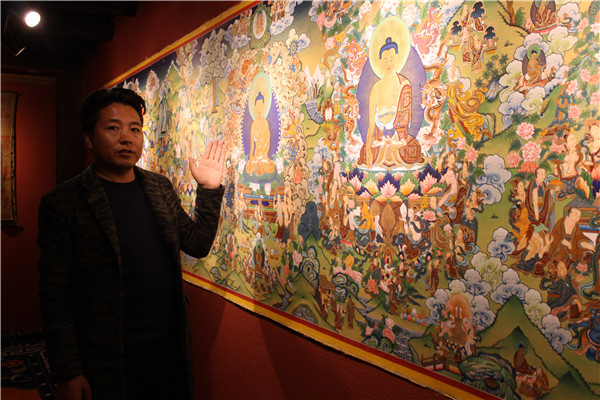 |
Kelsang Dawa shows his thangka collection at his painting center in Shangri-La, Yunnan province. The Tibetan art genre is energy-intensive-sometimes it takes years to finish one piece. WANG KAIHAO/CHINA DAILY |
In an alley near the entrance of Dukezong, a centuries-old Tibetan neighborhood in the center of Shangri-La, hides a thangka painting center.
When visitors come to admire its exquisite silk or cotton pieces with a Tibetan Buddhist theme, the owner, Kelsang Dawa, 36, asks them to put on shoe covers before entering the gallery. He even stops a visitor talking on the telephone in front of thangka.
For Kelsang Dawa, who grew up in Rebgong, an area in Qinghai province widely regarded as the home of thangka, what he deals with every day is not only art pieces, but something sacred.
"Once you learn about thangka you are connected with it for a lifetime," he says. "For a pious Buddhist like me, promoting thangka is a devotional duty rather than just a business."
He has endured a nirvana in fire, literally.
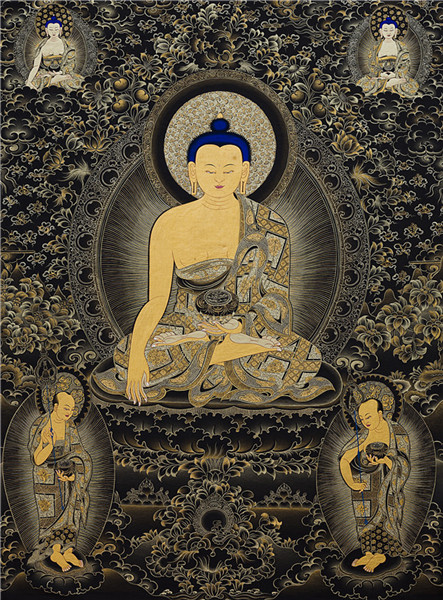 |
Kelsang Dawa shows his thangka collection at his painting center in Shangri-La, Yunnan province. The Tibetan art genre is energy-intensive-sometimes it takes years to finish one piece. WANG KAIHAO/CHINA DAILY |
In January 2014, most of Dukezong was destroyed by fire, hundreds of the workshop's works and collections being lost.
Fortunately, some of the most precious ones were out for exhibition at the time. He later opened an art gallery in the 798 Art Zone of Beijing, but he returned to Shangri-La to continue his devotions this year and plans to close the gallery in 798 because, he says, the rent is too high and the area is too noisy.
Kelsang Dawa first came to Shangri-La in 2007, and he was sorry to see that the passing on of thangka art there had long since vanished.
"I found there were many fine ancient thangka pieces being housed in monasteries here, but few people could draw new ones."
So he decided to nurture thangka in Shangri-La again by setting up the painting center.
According to his studies, traditional thangka in Shangri-La do not have colors as strong as those of Rebgong, and reveal some artistic style of other ethnic groups in Yunnan such as Naxi.
Though Rebgong Thangka was inscribed in China's first national list of intangible cultural heritages in 2006, and went onto the UNESCO list in 2009, Kelsang Dawa does not want to directly transplant his hometown genre to Shangri-La. He expects to resume traditional local styles in Shangri-La.
The principles of tradition are strongly adhered to. All pigments are made from rocks, and painters use their saliva as toner.
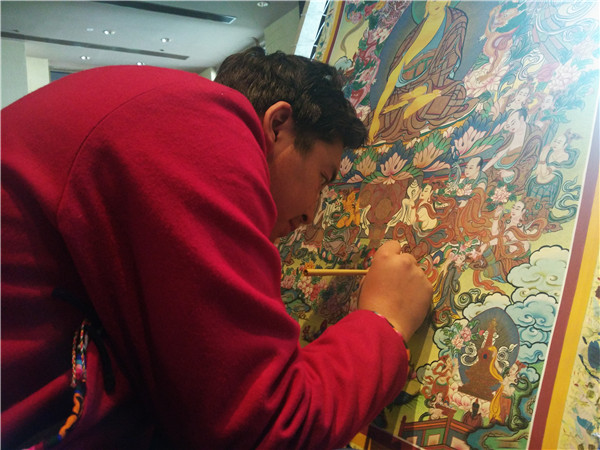 |
Kelsang Dawa shows his thangka collection at his painting center in Shangri-La, Yunnan province. The Tibetan art genre is energy-intensive-sometimes it takes years to finish one piece. WANG KAIHAO/CHINA DAILY |
Compared with ancient pieces, Kelsang Dawa pays more attention to details, and sometimes gold powder is used in outlines.
He often spends months fully focused on a work. One 7-meter-long thangka took him and another painter two years to finish.
There are six longtime painters in his workshop, but dozens gather there in summer. He has compiled a textbook on thangka as their reference guide.
He is the son of a thangka painter and first picked up drawing pens when he was 6. The technique has been passed down in his family for more than 10 generations.
"When my father finished a work for a monastery, he was treated like a god at the ceremony. Though the work was very energy-intensive, my father only asked for some yak meat or butter as payment. For a thangka painter the most important thing is to earn pilgrim's homage."
Kelsang Dawa became a lama in a monastery of his hometown when he was 11, following a thangka guru.
"I had to be very diligent, like getting up at 5 am for practice. But the hardships were worth it. No one can be a qualified thangka painter without at least seven years' learning and practice."
That was just a part of his syllabus to hone painting techniques; the study of Buddhism classics also played an important role.
To get more inspiration he has traveled to India, Bhutan and Nepal.
"It's impossible to be a good thangka painter without in-depth research in Buddhism, and someone exposed to different cultures can also breed new thoughts."
Kelsang Dawa later went to New York to teach thangka to local people and college students. But he felt it was more important to teach Chinese people about the art of their country, so he returned to China in 2007.
His paintings still keep attracting foreigners.
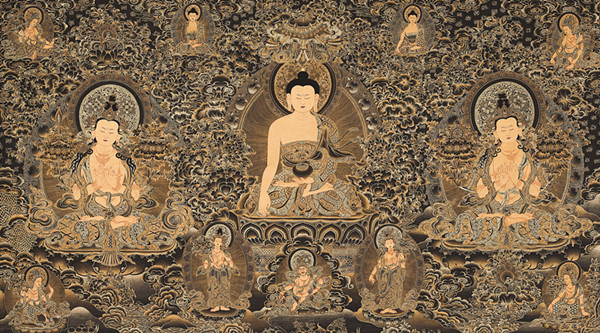 |
WANG KAIHAO/CHINA DAILY |
Anna Novikova, 26, a Russian who works in Guangzhou, Guangdong province, was hooked by the painting center when she was in Shangri-La in August. She returned a month later and has been learning thangka from Kelsang Dawa since then.
"All those paintings give me a lot of positive energy," she says. "And they represent very interesting philosophy. It is usually just fun stuff for foreigners, but this time I really feel I am a local here."
An exhibition featuring 80 pieces of contemporary thangka from Kelsang Dawa's painting center is to be shown in the Cultural Palace of Nationalities in Beijing soon.
"It's a privilege to be recognized by national-level institutions," he says.
If you go
Contemporary Thangka Art Exhibition
9 am-4 pm, free entry, Nov 16-23. 49 Fuxingmennei Street, exhibition hall of the Cultural Palace of Nationalities. 010-8319-5500.
Your Comment
Name E-mailRelated News
-
;
-
-
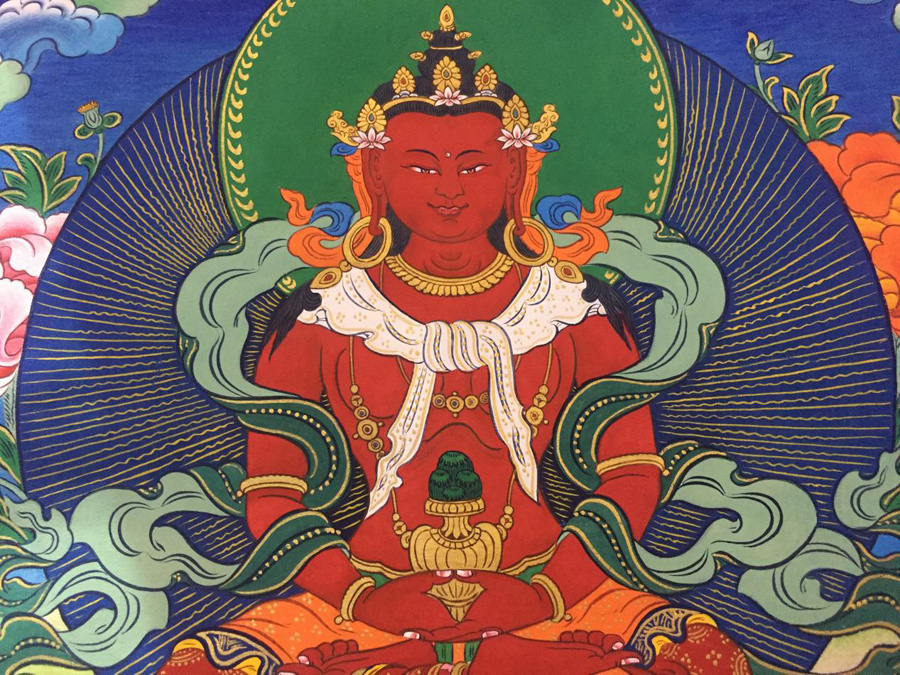
-
Tibetan Thangkas attract numerous visitors in Beijing
The Tibetan works of art, Tangkas, attract numerous visitors.
-
-
-
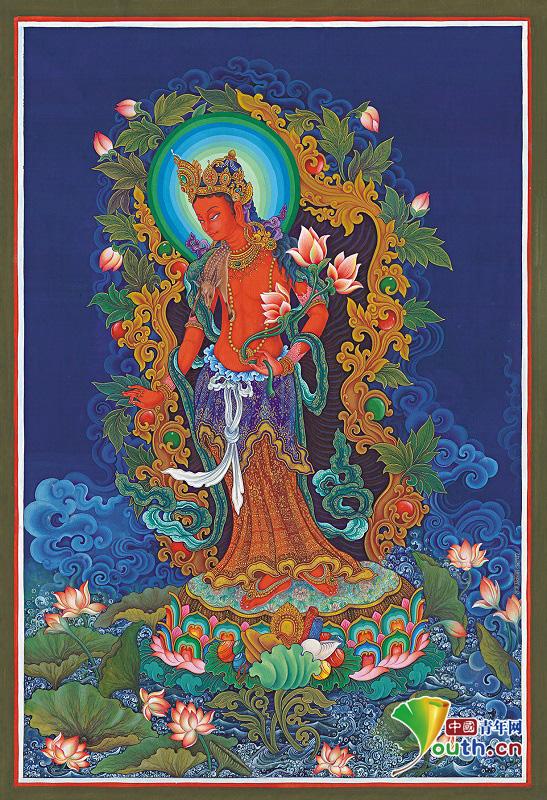
-
Nepalese Thangka art exhibition held in Beijing
This exhibition is a folk culture and art exchange between China and Nepal, which has enriched the spiritual and cultural lives of the people in the capital.
-
-
-
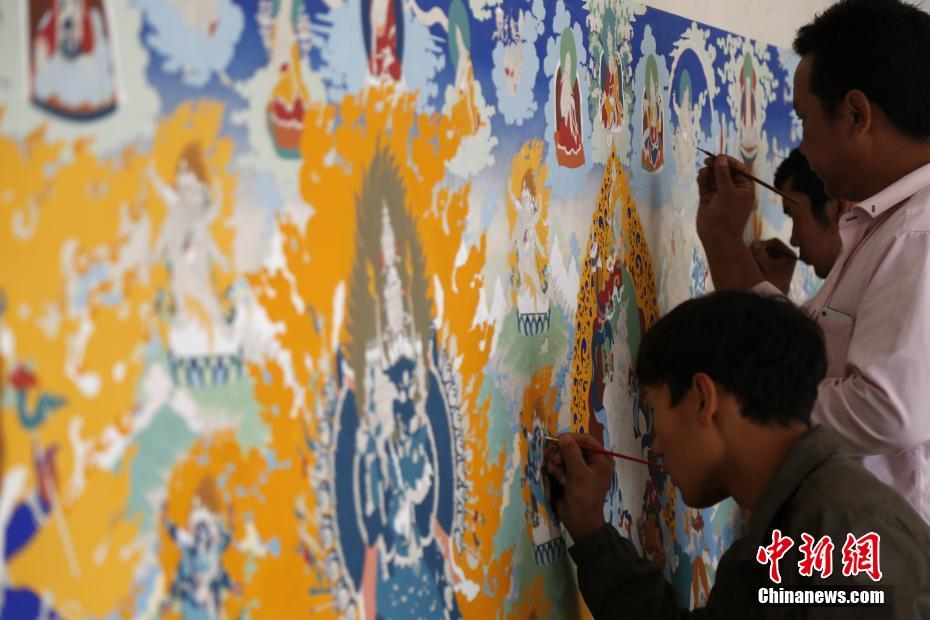
-
Thangka art from Tibetan herders of Qinghai become a hot seller
The Regong Art Academy was founded in 2006. Located in Wutun Village, Longwu Town, in Tongren County of Qinghai Province, the academy specializes in China’s intangible cultural heritage as well as the research, training, creation, and sales of fine art in Regong.
-
Based in Lhasa, Tibet Vista is a Tibet travel agency that specialized in Tibet permit, and Tibet tours for both private and group travelers at a local price!
•4 Days Lhasa City Group Tour from USD 460 •8 Days Everest Base Camp Group Tour from USD 850 •15 Days Mt.Kailash Group Tour from USD 1780 •2016 Tibet Train Tours from Beijing, Shanghai, Chengdu, Xining,etc










